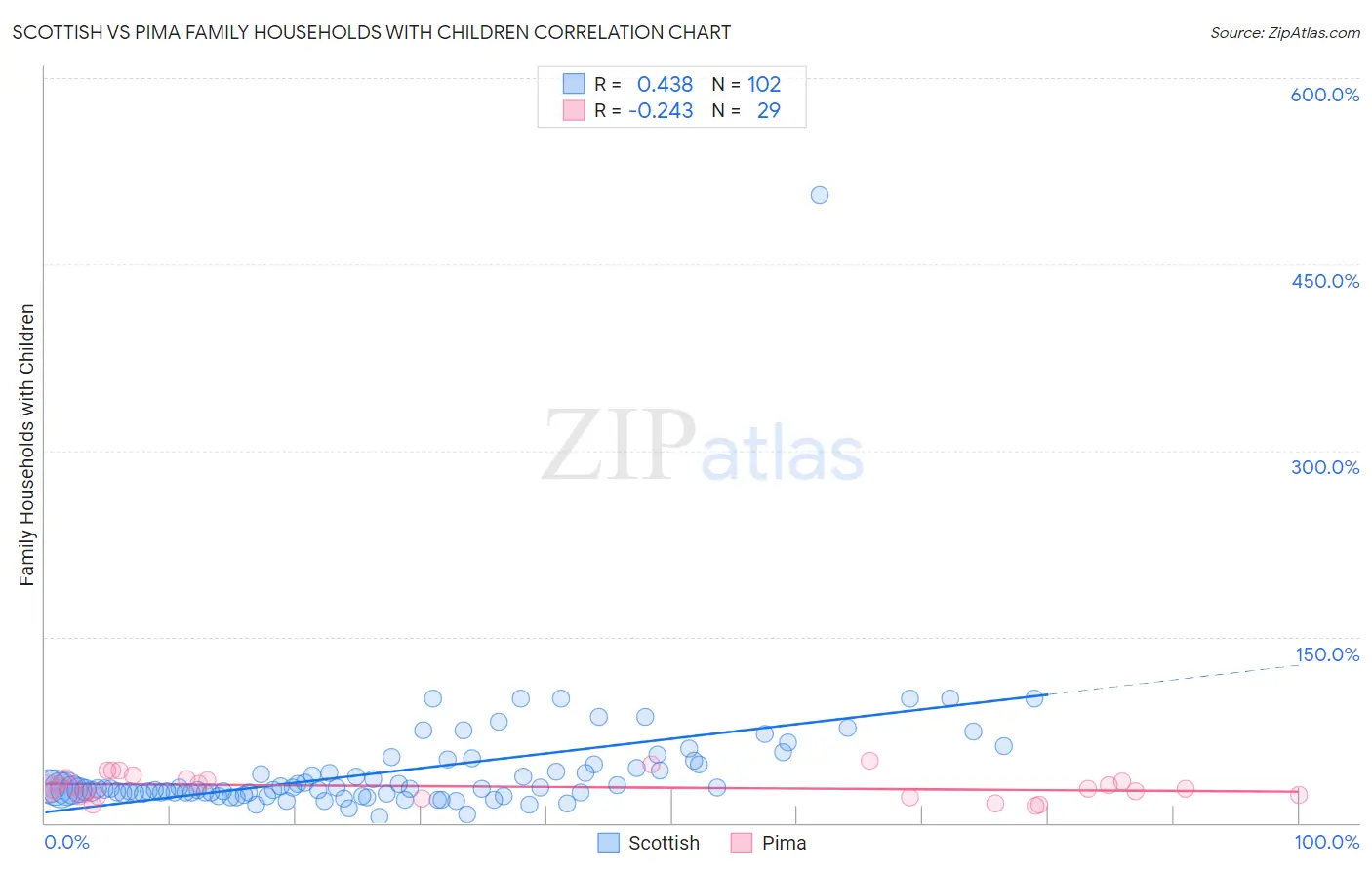Scottish vs Pima Family Households with Children
COMPARE
Scottish
Pima
Family Households with Children
Family Households with Children Comparison
Scottish
Pima
27.0%
FAMILY HOUSEHOLDS WITH CHILDREN
6.5/ 100
METRIC RATING
228th/ 347
METRIC RANK
27.1%
FAMILY HOUSEHOLDS WITH CHILDREN
9.2/ 100
METRIC RATING
223rd/ 347
METRIC RANK
Scottish vs Pima Family Households with Children Correlation Chart
The statistical analysis conducted on geographies consisting of 566,154,348 people shows a moderate positive correlation between the proportion of Scottish and percentage of family households with children in the United States with a correlation coefficient (R) of 0.438 and weighted average of 27.0%. Similarly, the statistical analysis conducted on geographies consisting of 61,534,200 people shows a weak negative correlation between the proportion of Pima and percentage of family households with children in the United States with a correlation coefficient (R) of -0.243 and weighted average of 27.1%, a difference of 0.21%.

Family Households with Children Correlation Summary
| Measurement | Scottish | Pima |
| Minimum | 5.1% | 13.8% |
| Maximum | 505.5% | 50.0% |
| Range | 500.4% | 36.2% |
| Mean | 42.0% | 29.2% |
| Median | 27.3% | 27.5% |
| Interquartile 25% (IQ1) | 24.2% | 21.8% |
| Interquartile 75% (IQ3) | 47.1% | 35.9% |
| Interquartile Range (IQR) | 22.9% | 14.2% |
| Standard Deviation (Sample) | 51.9% | 9.9% |
| Standard Deviation (Population) | 51.6% | 9.7% |
Demographics Similar to Scottish and Pima by Family Households with Children
In terms of family households with children, the demographic groups most similar to Scottish are Czechoslovakian (27.0%, a difference of 0.0%), Tsimshian (27.0%, a difference of 0.0%), Immigrants from Caribbean (27.0%, a difference of 0.030%), Canadian (27.1%, a difference of 0.080%), and Bulgarian (27.0%, a difference of 0.080%). Similarly, the demographic groups most similar to Pima are Paraguayan (27.1%, a difference of 0.010%), New Zealander (27.1%, a difference of 0.030%), German (27.1%, a difference of 0.030%), Austrian (27.1%, a difference of 0.050%), and Immigrants from Japan (27.1%, a difference of 0.090%).
| Demographics | Rating | Rank | Family Households with Children |
| Northern Europeans | 12.8 /100 | #215 | Poor 27.2% |
| Cubans | 12.2 /100 | #216 | Poor 27.1% |
| U.S. Virgin Islanders | 12.1 /100 | #217 | Poor 27.1% |
| Greeks | 11.4 /100 | #218 | Poor 27.1% |
| Immigrants | Japan | 10.7 /100 | #219 | Poor 27.1% |
| Austrians | 9.9 /100 | #220 | Tragic 27.1% |
| New Zealanders | 9.6 /100 | #221 | Tragic 27.1% |
| Paraguayans | 9.4 /100 | #222 | Tragic 27.1% |
| Pima | 9.2 /100 | #223 | Tragic 27.1% |
| Germans | 8.7 /100 | #224 | Tragic 27.1% |
| Canadians | 7.5 /100 | #225 | Tragic 27.1% |
| Czechoslovakians | 6.6 /100 | #226 | Tragic 27.0% |
| Tsimshian | 6.6 /100 | #227 | Tragic 27.0% |
| Scottish | 6.5 /100 | #228 | Tragic 27.0% |
| Immigrants | Caribbean | 6.3 /100 | #229 | Tragic 27.0% |
| Bulgarians | 5.8 /100 | #230 | Tragic 27.0% |
| Luxembourgers | 5.5 /100 | #231 | Tragic 27.0% |
| Yugoslavians | 5.1 /100 | #232 | Tragic 27.0% |
| Immigrants | Italy | 5.0 /100 | #233 | Tragic 27.0% |
| Immigrants | Germany | 4.4 /100 | #234 | Tragic 27.0% |
| Immigrants | Morocco | 4.2 /100 | #235 | Tragic 27.0% |